Reviewing WHIP+ and Other Disaster Assistance Programs
TOPICS
WHIP+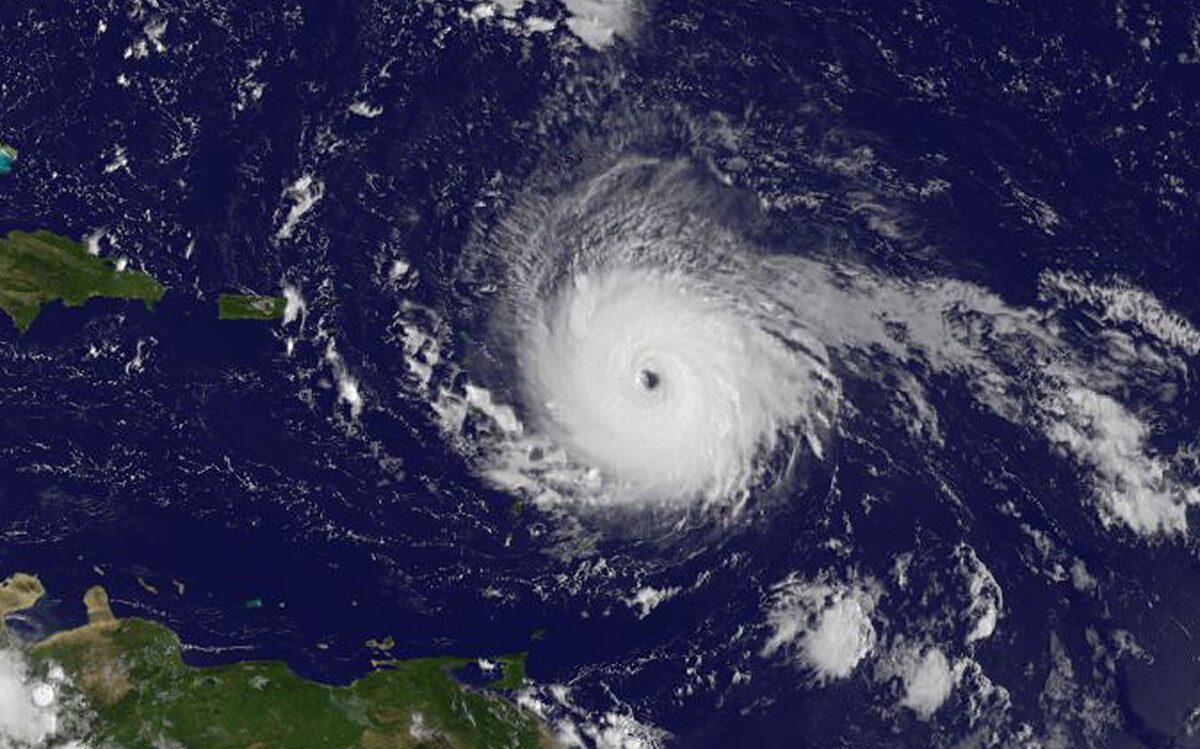
photo credit: NASA Goddard Space Flight Center / CC BY 2.0
John Newton, Ph.D.
Former AFBF Economist
Earlier this year the House and Senate passed a $19.1 billion disaster aid bill that included more than $3 billion in funding for disasters that impacted farmers and ranchers (What to Expect in the New Disaster Aid Package). The disaster funding will provide payments to producers to offset losses from hurricanes, floods, tornadoes, typhoons, volcanic activity, snowstorms and wildfires that occurred in 2018 and 2019.
Disaster assistance will be administered through multiple programs, including the Wildfire and Hurricane Indemnity Program Plus (WHIP+), which builds off the 2017 WHIP program and will provide financial assistance to producers with production losses on both insured and non-insured crops. The On-Farm Storage Loss program will provide payments to producers who suffered a loss of harvest crops stored in on-farm structures, i.e., grain bins and elevators damaged during the record flooding in the Midwest this spring.
Another component of the disaster assistance that is of interest to many producers is the enhancement to prevent plant coverage under crop insurance. Producers who suffered historical delays in plantings during 2019 will be eligible for a prevented planting supplemental disaster payment. Finally, a Tree Assistance Program will provide a cost-share for farmers to replant and rehabilitate trees and a Milk Loss Program will compensate dairy farmers who were unable to commercially market milk due to natural disasters. Today’s Market Intel reviews key provisions of WHIP+ and the On-Farm Storage Loss Program and the enhancements to prevent plant coverage.
WHIP+
WHIP+ will provide financial assistance for crop losses many farmers and ranchers experienced in 2018 and 2019 because of record precipitation, extreme cold and snowfall, flooding, hurricanes, wildfires and tornadoes. Eligible crops include those covered under federal crop insurance or Noninsured Crop Disaster Assistance Program.
The payment formula for WHIP+ is based on the expected value of the crop and the WHIP+ payment factor and takes into consideration the value of the crop harvested and the insurance indemnity. The WHIP+ payment formula is as follows:
WHIP+ Payment = (Expected Value of the Crop) x (WHIP+ Payment Factor) – (Value of Crop Harvested) – (Value of Salvage) – (Insurance Indemnity)
WHIP+ payment factors range from a low of 70% for producers without crop insurance or NAP coverage to a high of 95% for producers with at least 80% coverage under crop insurance, Figure 1.
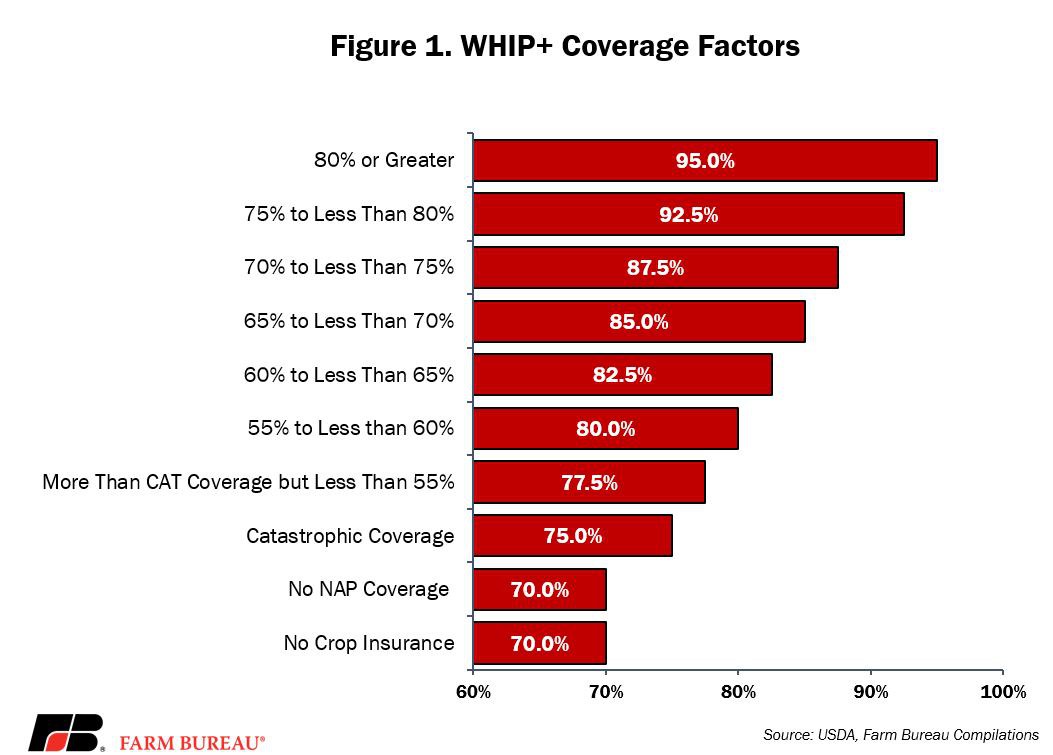
WHIP+ payments will be made in two installments. Producers who suffered a disaster in 2018 only will receive 100% of the WHIP+ payment, while producers who suffered a disaster in 2019 will receive 50% of the WHIP+ payment. The prorated payment in 2019 is designed to provide additional budget capacity should additional natural disasters occur in 2019 and adversely impact producers.
To automatically qualify for WHIP+, producers must be in a county with a presidential emergency disaster declaration or a secretarial disaster designation (primary counties only). Producers who live in counties that did not receive a disaster declaration or designation can still apply for assistance, but additional documentation is required. Figure 2 identifies the counties (excluding those in Hawaii and Alaska) that received a qualifying disaster declaration as of September 9. Importantly, USDA is still assessing counties that may need an emergency disaster declaration, so more counties may qualify in the coming months.
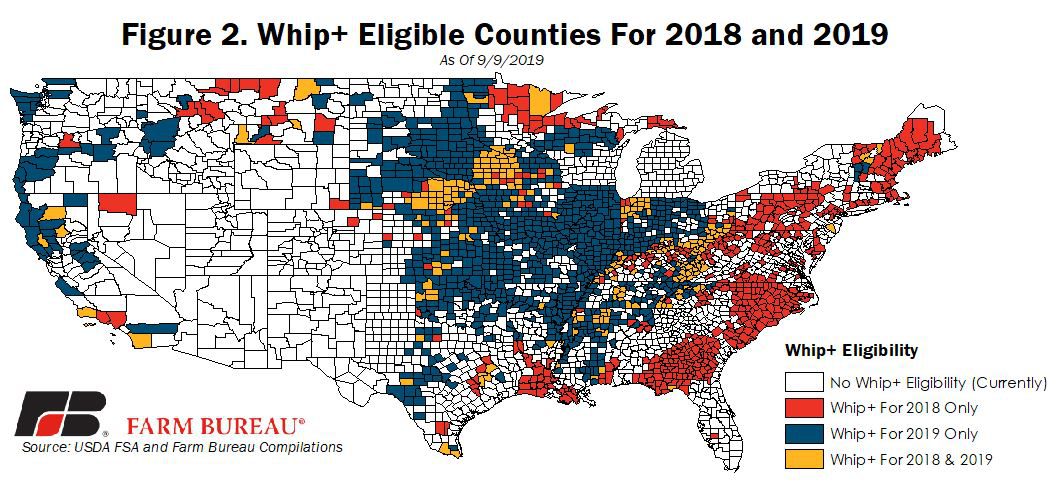
On-Farm Storage Loss Program
Following record flooding in the Midwest this year many farmers lost harvested crops and hay that were in on-farm storage. USDA will provide these farmers with a direct payment equal to 75% of the Farm Service Agency payment price. Covered commodities align with those covered under farm bill programs and include but are not limited to corn, soybeans, wheat, rice, seed cotton, peanuts and grain sorghum. On-farm storage payment rates are highlighted in Figure 3.
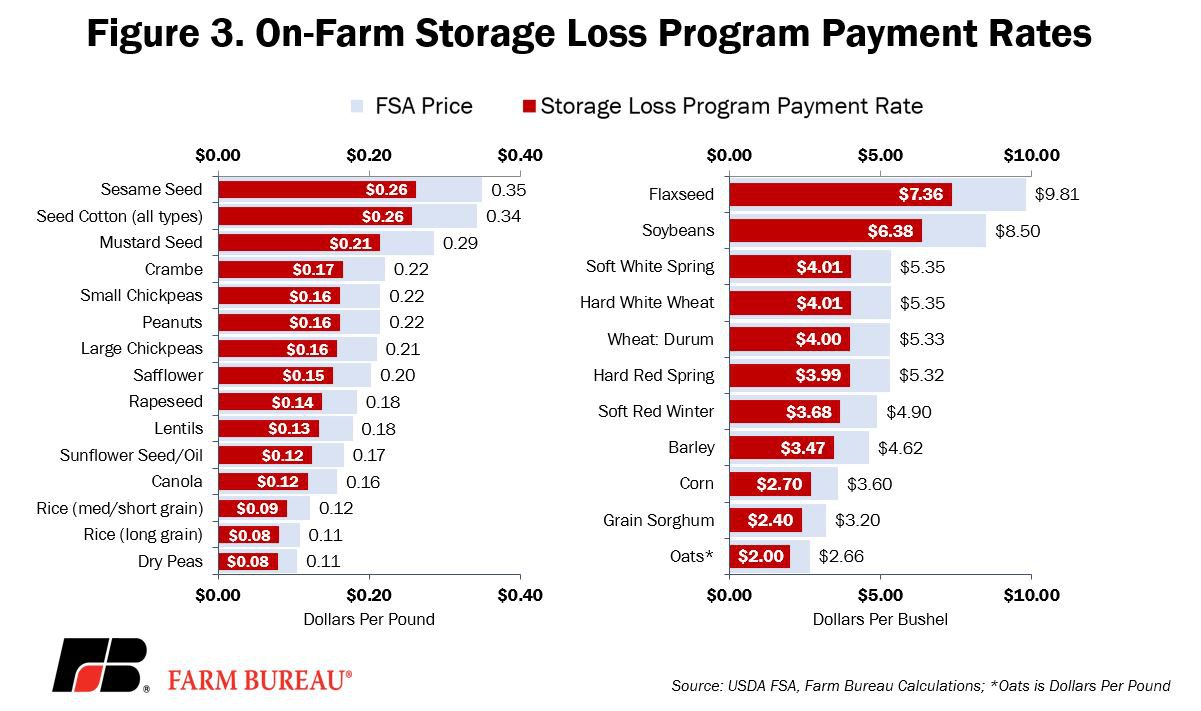
Enhancement to Prevent Plant Coverage
FSA Crop Acreage Data reveals that a record 19.6 million acres were prevented from being planted due to adverse weather conditions this year (Prevent Plantings Set Record in 2019 at 20 Million Acres). Crop insurance compensates policyholders for pre-planting costs incurred in preparation for planting the crop. For corn, the prevent payment rate is 55% of the revenue guarantee and for soybeans the prevent payment rate was 60% of the revenue guarantee. For example, a corn grower with average production history of 200 bushels per and an 80% coverage level would receive a prevent plant benefit of $352 per acre in 2019, i.e., $352=$4×200×80%×55%.
Under the new disaster assistance package, farmers with a prevented planting insurance claim will be eligible for a supplemental payment of up to 15% of their prevented planting indemnity. The bonus prevented planting payment is 10% for growers who did not purchase the harvest price option, and 15% for growers who purchased the harvest price option. For the 2019 coverage year, 91% of corn and soybean acres covered under crop insurance purchased the harvest price option. Figure 4 highlights the percent of corn and soybean acreage by county with the harvest price option.
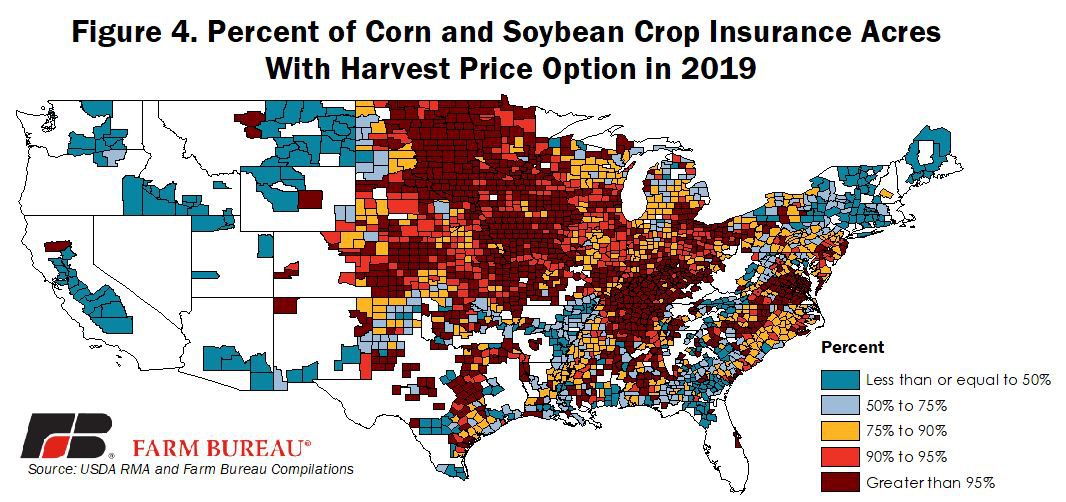
The highest concentration of prevented plantings were in eastern South Dakota, Northern Illinois, along the western edge of Lake Erie and along the Mississippi. For eastern South Dakota, Northern Illinois and the western Lake Erie areas, a large percentage of corn and soybean farmers purchased the harvest price option, meaning they will be eligible for the supplemental payment of 15%. However, for growers along the Mississippi River and in Arkansas, the adoption rate of the harvest price option was lower – meaning more farmers in this area may only qualify for the 10% supplemental payment on crop insurance.
Importantly, the prevented planting bonus payment is based on the indemnity and not an addition to the initial prevented planting payment factor. The difference should be clearly understood by farmers. As an example, in the above scenario, a farmer with the HPO would receive a supplemental payment of $52.80 per acre (15%×$352) and not the $96 per acre that would be derived if 15% was added to the initial 55% in the prevented planting indemnity claim, i.e., $96=(70%-55%)×$4×200×80%.
Summary
Congress and the administration responded to widespread natural disasters in 2018 and 2019 by passing a $19.1 billion disaster aid bill, with more than $3 billion allocated to agriculture-related disaster relief. New disaster assistance programs include a WHIP+ program to compensate farmers for crop losses, a bonus payment on acres prevented from being planted and payments to farmers who lost a harvested crop that was stored on-farm.
WHIP+ eligibility is automatic for farmers in disaster-declared counties. Farmers without a disaster declaration may still apply for WHIP+ but must provide supporting documentation to establish that the crops were directly affected by a qualifying disaster loss. Farmers receiving WHIP+ benefits will be subject to payment limitations and means-testing criteria and will be required to purchase crop insurance or NAP for two consecutive crop years. Importantly, farmers do not need to be in a disaster declared-area to qualify for assistance related to prevented plantings or on-farm storage.
Update on Impact of Unharvested Factor
Producers who are eligible for WHIP+ disaster assistance payments but were unable to harvest the crop will have their payment adjusted by an “unharvested factor.” The unharvested factor reduces the WHIP+ benefit by modifying the WHIP+ formula to:
WHIP+ Payment =[ (Expected Value of the Crop) x (WHIP+ Payment Factor) – (Value of Crop Harvested) – (Value of Salvage)]x (1-Unharvested Factor) – (Insurance Indemnity)
The unharvested factor has been used in other disaster programs in an effort to equalize compensation between producers who harvested a crop and those who were unable to harvest the crop, i.e., take into consideration harvesting costs. The unharvested factor is determined by state FSA committees and, as such, differs by state.
Growers who were unable to harvest a crop will see their WHIP+ benefit reduced. Importantly, because the unharvested factor is multiplied by the WHIP+ payment, and the WHIP+ payment is a function of the WHIP+ factor which is itself a function of the crop insurance coverage level, the impact on the WHIP+ payment is not uniform across coverage level options. The unharvested reduction is larger for farmers purchasing higher levels of crop insurance coverage than for those with lower or catastrophic coverage options.
Trending Topics
VIEW ALL